The Montalcino House
No turning back + handmade terracotta + olive trees gone wild + winter in Montalcino
If you are just tuning in, check out our past newsletters to catch up on our adventure of finding, buying, and restoring a 100-year-old home in Montalcino.
No turning back
Stefano and I arrived in Montalcino on Sunday, January 19, ready to spend a marathon week on-site. We would meet with our contractors, select materials, and make the necessary decisions so that work could continue once we were back home.
Living in the US and unable to monitor day-to-day activity, one of our fears has been that work would progress slowly. Gladly, that hasn’t been the case. When we set foot into the house, not having been there since October, it was almost unrecognizable.
Nearly everything had been demoed, and a new pile of construction debris sat in the backyard, waiting to be hauled away. Scaffolding dotted the upstairs, where the crew had installed new ceilings and removed the plaster to reveal a beautiful stone wall along the staircase.
There were huge coils of flexible water pipes throughout the home, some of which were already poking through holes made in walls and floors as the plumbing rough-in was underway. Cerchiature - structural steel headers, had been installed where the entrance to the kitchen had been widened and where the upstairs bedroom window would be opened up, revealing the impressively thick stone wall.
When we bought the house just about one year ago, it was dated but livable. Now, any thoughts of just using the home as is and slowly fixing it up were out the window. The home is a complete construction zone, and there is no alternative but to finish the work. It was exciting and a bit overwhelming.


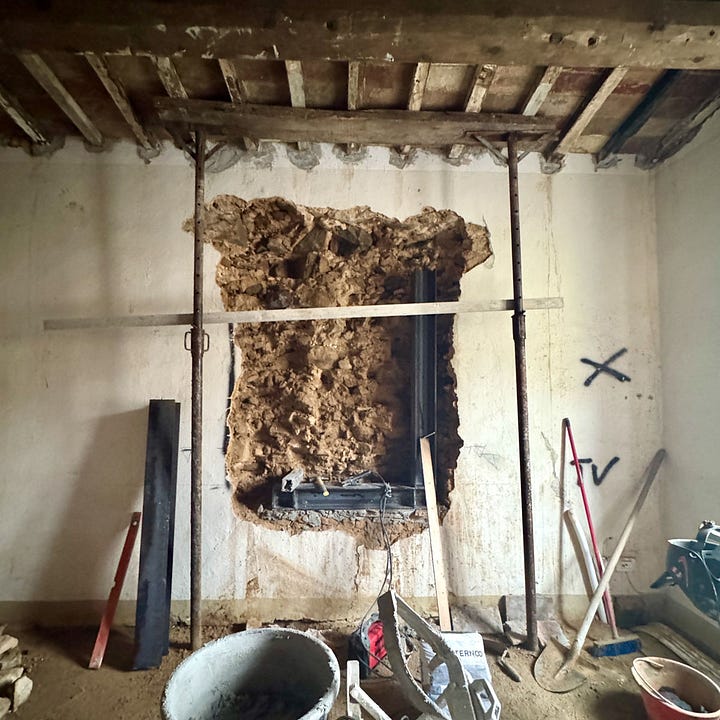

Retrofitting an ancient home
One of the things we appreciate most about our team of contractors is their ability to preserve and highlight the home's original features while retrofitting it for modern-day living.
On the one hand, at our contractor Massimiliano’s suggestion, we are removing the plaster from a few walls to expose the original stone. We are also reclaiming the original look of the ceilings with chestnut beams and terracotta tiles and opening up the original archways leading from the house to the backyard. “Dobbiamo ridare un pò di personalità a questa casa,” Massimiliano told us. We need to give this house some of its personality back.
At the same time, we are equipping the home with a wifi-controlled electrical system, three bathrooms, each with heated bathroom floors, hydraulic toe-kick heaters in the kitchen, laundry upstairs and downstairs, a water line to the refrigerator, hot and cold water on the terrace, and outdoor irrigation.
When the walls are made of stone, roughing in electrical and plumbing systems requires fare le tracce—cutting channels or grooves into walls, floors, and ceilings to house electrical conduits, plumbing pipes, and other installations. As we look at the thick stone behind those tracce, we are in awe of the modern retrofitting of these ancient homes. Whoever built this house in 1828 would have never imagined it!

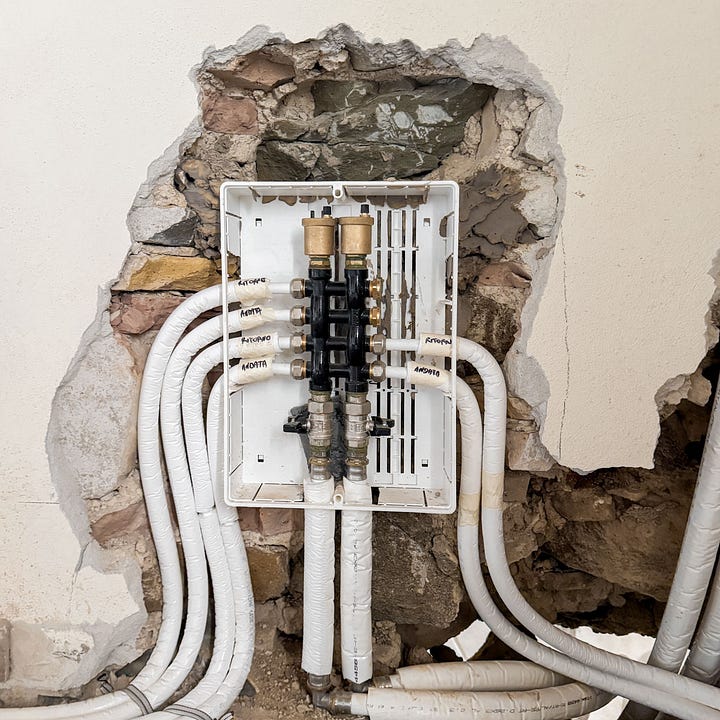
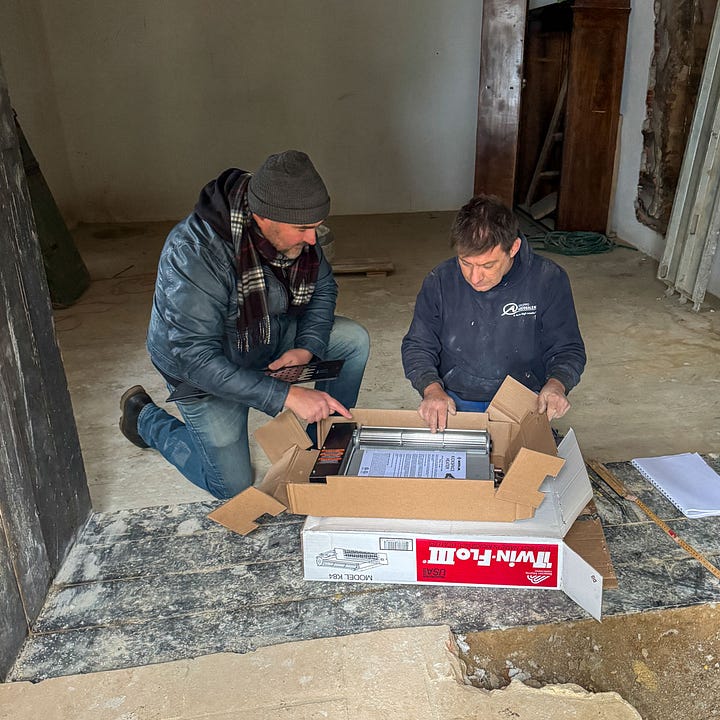

Handmade terracotta
Terracotta floors are a defining feature of Tuscan homes and buildings. In keeping with tradition and our commitment to restoring the home to its original state, we will install terracotta flooring throughout, with the possible exception of the kitchen.
It’s time to order the terracotta, so we set out to visit a few artisan terracotta factories to learn more about the production, products, and costs. In a small village called Castel Viscardo, near where the regions of Tuscany, Umbria, and Lazio meet, there are twelve different terracotta producers, one next to another. We stopped by a few to have a look.
Inside the production space were a few men, each standing in front of a table with a large mound of wet clay on top of it. The clay, our guide explained, is excavated from the land just behind the production space. With their hands, the men scooped up a bunch of clay, slapped it down on the table inside a wooden mold, and then used another tool to smooth the clay into the wooden mold, making a brick. From there, they transfer the brick to the floor, where it is left to dry. It is physical work! I would have been exhausted after making just a few of these, yet these guys were at it all day, making 500 or more bricks in a shift.
Once dry, the bricks are fired in a kiln at temperatures between 1,650–2,000°F, the temperature determining whether the brick’s hue will be more red or yellow. After firing, the bricks are either left with a rustic finish or sanded to create a softer, smoother finish.
We were humbled by the physicality and the creativity involved in making terracotta tile and happy that there is still a place for handcrafted, artisan materials in modern construction.
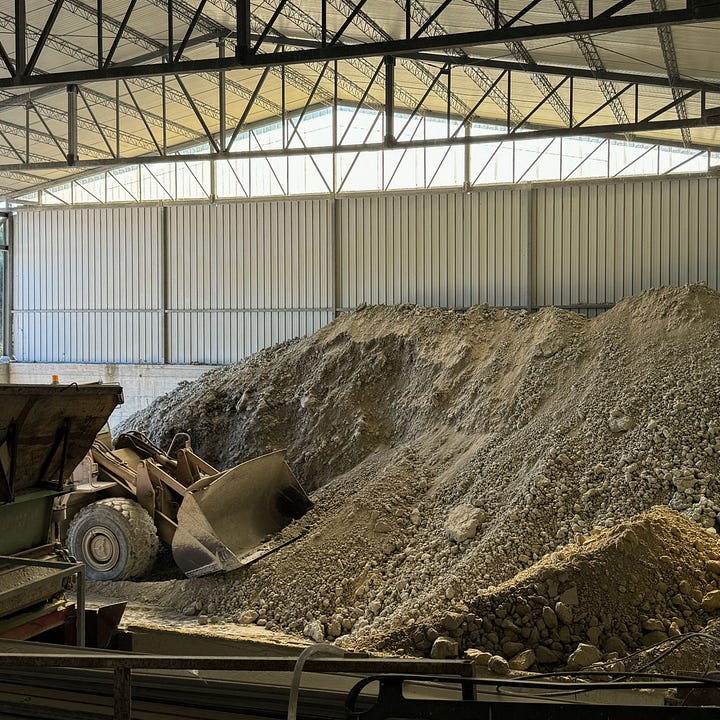
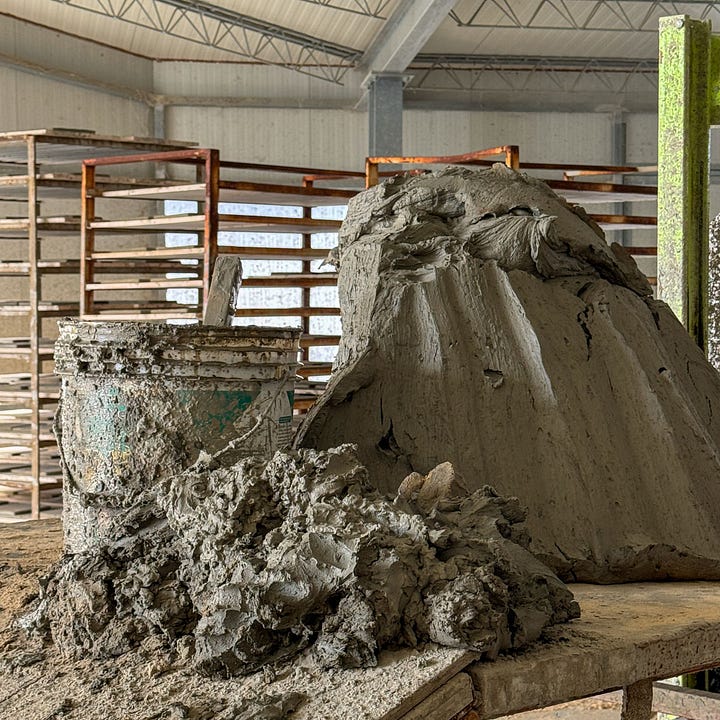

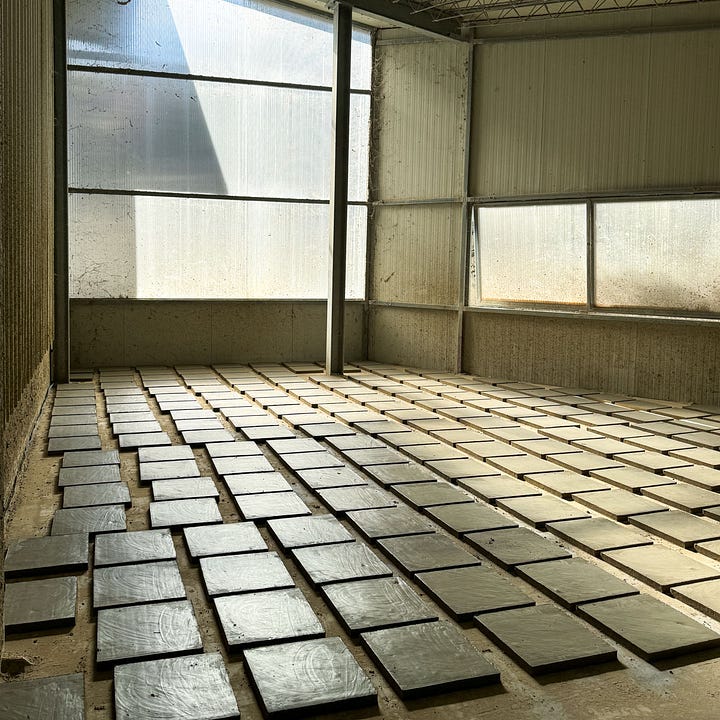
Two unruly olive trees
Buongiorno Signora, è a Montalcino? It was our neighbor, Mariano, messaging me on WhatsApp asking if we were in Montalcino.
Even though I’ve told him to call me Cara, he prefers to call me Signora. Cara is a term of endearment in Italian, so saying “Buongiorno Cara” is like saying “Hello dear,” which does seem odd to Italians when they first meet me.
Mariano prunes olive trees for a living, and the last time we were in town, we asked his opinion on the two olive in our backyard. They have not been pruned in years and have become unruly. Furthermore, the original trunks of the trees had died—likely in the deep freeze of 1985, the locals tell us—and what was left of the trees were offshoots that had taken a life of their own. Besides not looking very good, they’d grown so tall that they impeded the views of the Val d’Orcia.
It was Mariano’s opinion that it would be challenging to reign the trees in through pruning, and we’re better off removing them. If we wanted, he said, we could replant two new olive trees of a smaller variety, more suited for backyards. We gave him the green light to take the trees down and agreed that he would leave what he could for firewood and haul the brush away.
A day or so later, the phone rang. It was Mariano. “Do you have a geometra?” he asked. “I got thinking, those olive trees may fall under historical preservation rules. You might need the city’s permission to remove them.
Wow - that hadn’t occurred to us. We thanked him for his forethought, told him we did have a geometra, and said that we’d follow up.
The next day, we asked Gabriele, our geometra, about the olive trees. Yes, he said, I am almost certain that we will need permission and a permit to take those down. We will look into it and, if necessary, submit the request. We’ll tell them that, unfortunately, the trees have become ungovernable and that we are happy to replace them with two new olive plants. I will let you know what they tell us.
Enjoying the quiet of winter in Montalcino
We knew January would be quiet in Montalcino, but we were curious to see just how quiet it was. To our surprise, it was lovely. The weather was misty and a bit foggy on several days, but the sun came out later in the week, and the winter sunrises and sunsets were stunning.
A few shops and restaurants were closed, but most places were open—just less hectic. We ate out a couple of evenings, visiting a few of the restauranteurs we know. Mostly, though, we cooked at the apartment where we were staying, making frequent trips to the Coop grocery store, the local delis, and the seafood stand, which opens on Tuesdays and Fridays.
Maybe it's us, our perception tainted by the beauty of our surroundings, but everything was delicious: the lemons were more lemony, the parsley more vibrant, the salt salts more than it does back home, and the seafood was unlike anything we can find here. We are already planning our next trip back.
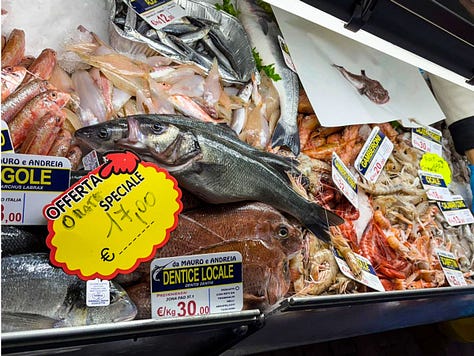
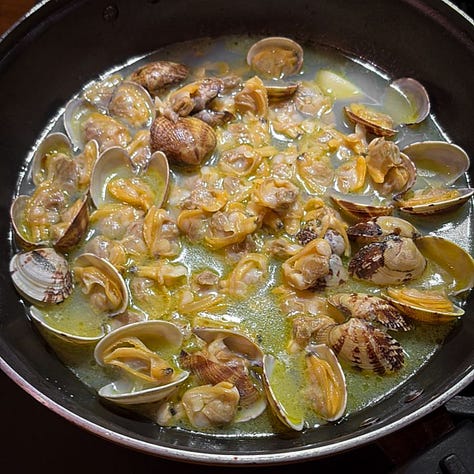



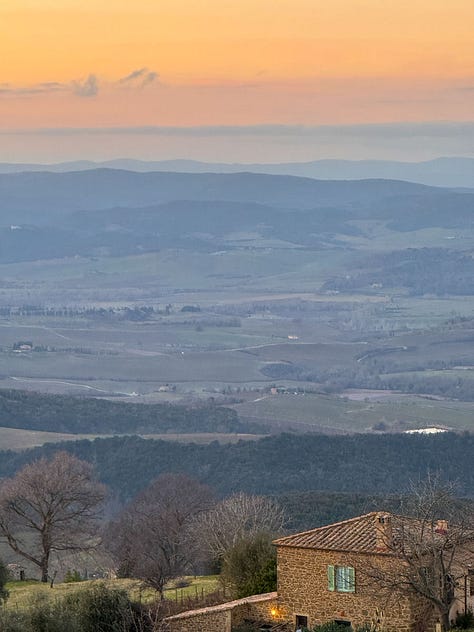

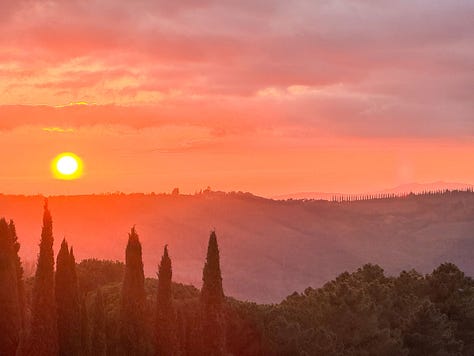

About Montalcino
Montalcino is a medieval town of approximately 6,000 residents, located about 25 miles south of Siena, 85 miles south of Florence, and 145 miles north of Rome. Perched on a hill in the heart of the world-class Brunello di Montalcino wine-producing region, Montalcino has scenic views of the olive groves and vineyards of the surrounding countryside. Visitors come from all over the world to enjoy the town’s cultural events and to experience its wine tourism. It’s long been one of our favorite places to visit.








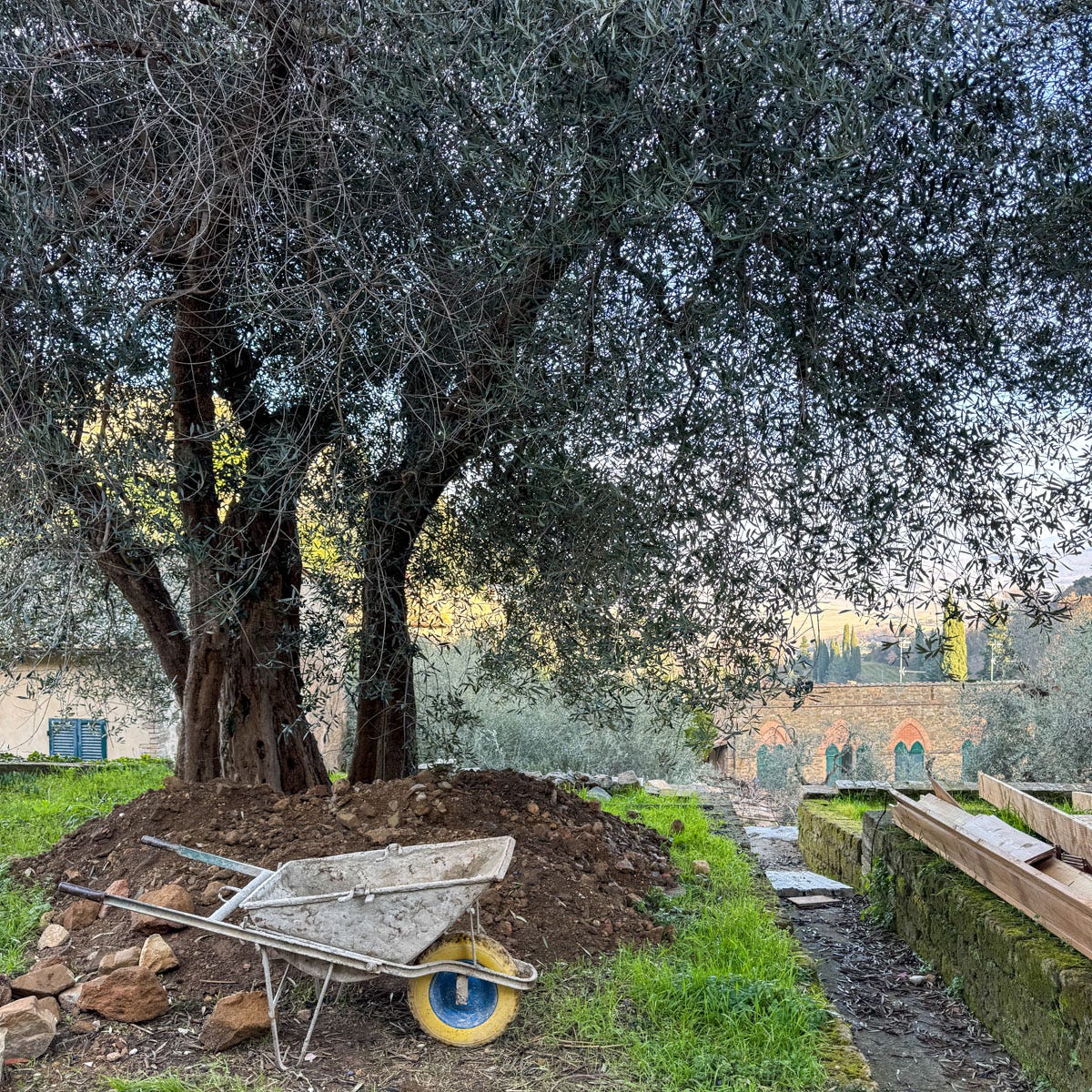
These pictures are giving me so much flashback anxiety 😂😂😂 You are going to LOVE the underfloor heating. We installed it downstairs in our little Venetian house & it is so wonderful. Good luck getting through this next part. I can’t wait to see the transformation
So exciting!